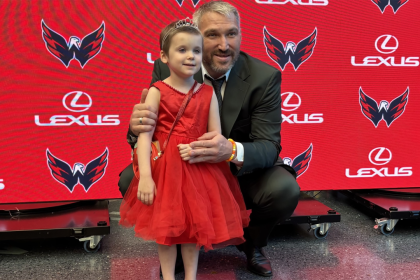Quinn Cochran-Zipp, a 25-year-old lab technician from Greeley, Colorado, faced a harrowing ordeal when severe abdominal pain led her to the emergency room three times within a short period. Eventually, doctors diagnosed her with early-stage cancer in the germ cells of her right ovary. Following emergency surgery four years ago, Cochran-Zipp triumphed over cancer, but her medical journey didn’t end there.
At the time of her treatment, both hospitals recognized that Cochran-Zipp qualified for full financial assistance due to her exceedingly low income as a college student. The prospect of incurring approximately $100,000 in medical bills was daunting, but receiving this assistance brought her considerable relief.
However, the challenges began when she started receiving surprise bills from independent doctors who provided care during her hospital visits. Because these specialists, including those in emergency medicine, anesthesiology, and radiology, were not official staff members of the hospitals, they were not obliged to comply with the hospitals’ financial assistance policies. The bills she received from these specialists amounted to over $5,000.
For Cochran-Zipp, even this smaller sum was significant. To manage the costs, she entered into payment plans and utilized scholarship funds and COVID-19 stimulus money.
Now, as she works at a community health center and prepares to apply to medical schools, her experiences as a patient have profoundly influenced her perspective on becoming a physician. “I don’t think that I could be a provider that, in good conscience, charges patients money in addition to the hospital fees,” she said.
Financial assistance programs in hospitals are designed to provide support to uninsured and low-income individuals, but many patients encounter complications. Eligibility is generally determined using a sliding income scale, while some hospitals apply additional criteria such as residency status.
Despite qualifying for assistance, some patients find that they do not receive discounts. This issue primarily arises because many independent physicians operating within hospitals are exempt from the financial assistance policies. Additionally, hospitals may restrict the types of services that are eligible for charity care, sometimes known as discounted care.
Caitlin Donovan, a senior director at the Patient Advocate Foundation, remarked, “It’s a hole in the system,” noting that case managers repeatedly see these issues arise.
Looking ahead, the demand for financial assistance is expected to surge. Over the next decade, projections indicate that more than 14 million people may lose their health insurance. This is largely attributed to changes in the federal Medicaid program and state insurance marketplaces driven by recent tax and spending legislation supported by the previous Trump administration. Many of those who lose insurance might qualify for reduced care options.
While nonprofit hospitals enjoy tax exemptions, they must implement policies to assist patients in paying for emergency and medically necessary treatments. For-profit hospitals, although not mandated to provide such assistance, often do so.
One of the underlying problems is that independent contractors working at hospitals, including those in emergency medicine, radiology, and anesthesia, frequently fall outside the umbrella of hospital charity care. The Lown Institute, a healthcare think tank, has reported that a significant percentage of these services are not covered by hospital financial assistance programs.
For instance, at Hartford HealthCare, a major nonprofit health system in Connecticut, certain specialists who work in its emergency departments are excluded from financial aid due to their contractor status. The health system declined to comment for this article.
Researchers have also identified issues stemming from the definition of “medically necessary” care within the financial assistance policies mandated for nonprofit hospitals by IRS regulations. Although emergency and medically necessary services are supposed to be included, hospitals have discretion in how they define these terms.
Historically, exclusions were limited to services typically not covered by insurance, such as cosmetic or experimental procedures. However, a recent trend has seen hospitals narrowing their definition, potentially excluding vital treatments such as kidney stone procedures or cancer biopsies from assistance, according to a study published in The New England Journal of Medicine.
Mark Hall, a co-author of the study and professor at Wake Forest University, expressed concern over this trend, which could indicate the beginning of broader exclusion patterns. “There’s not really much in the way of regulatory guidance in what should be in or out of a financial assistance policy,” Christopher Goodman from the University of South Carolina noted.
While the American Hospital Association chose not to comment on this issue, Robert Mills from the American Medical Association stated that the organization does not have a stance on whether contracted physicians should be included in hospital financial assistance policies.
For-profit hospitals retain more flexibility in designing their financial assistance frameworks. HCA Healthcare, the nation’s largest for-profit health system, grants discounted or free care primarily for emergent or non-elective services. Spokesperson Harlow Sumerford confirmed that policies for independent third-party providers differ from those in hospitals.
Recently, several states have enacted medical debt protection laws, some of which apply to contracted medical professionals who bill patients separately. Colorado’s Hospital Discounted Care law, which came into effect in September 2022, mandates that hospitals assess all uninsured individuals for Medicaid eligibility and offer discounted care to those earning up to 250% of the federal poverty level.
Unfortunately for Cochran-Zipp, this law was implemented after her treatment. As hospitals brace for the impact of upcoming federal healthcare legislation, experts predict that financial assistance programs may be vulnerable to cuts, leading to greater difficulties for patients seeking necessary care.
As Ge Bai, a health policy expert, pointed out, hospitals may respond to financial pressures by reducing their charity care commitments, stating, “In that environment, charity care will be a burden.”






